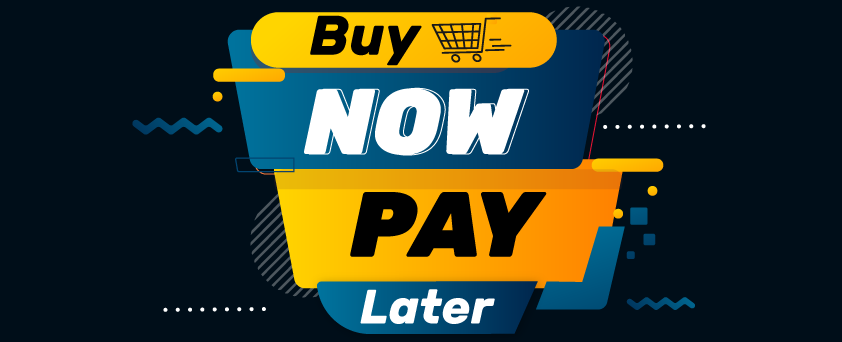| Summary: BNPL (Buy Now, Pay Later) and Net 30 are popular B2B payment options that help manage cash flow and build supplier relationships. BNPL offers flexibility with installment payments, while Net 30 provides a 30-day payment window for financial stability. |
In today’s fast-paced business environment, maintaining a healthy cash flow is crucial for companies of all sizes. The right payment options can play a significant role in achieving this. Two popular B2B payment methods—BNPL (Buy Now, Pay Later) and Net 30—offer businesses flexibility in managing finances. BNPL, once a consumer-focused disruptor, has made a splash in B2B transactions, offering businesses the flexibility to delay payments.
Meanwhile, Net 30 remains a trusted standard, providing a 30-day period to settle invoices. Both options have distinct advantages and cater to different needs, making it essential for businesses to understand how each can impact their finances and operations.
Here, we will explore the benefits and considerations of each payment method, helping businesses understand how net terms work in B2B and determine which option best aligns with their financial goals and operational strategies.

What Fuels BNPL’s Growth?
The growth of BNPL (Buy Now, Pay Later) in B2B payments is driven by several factors that align with modern business needs. Let’s explore these:
- Cash Flow Optimization: Businesses seek ways to manage their cash flow. BNPL enables companies to acquire essential goods and services while delaying payment, ensuring that their working capital remains intact. This flexibility can be a game-changer for small to medium-sized enterprises with tight budgets.
- Consumerization of B2B: Consumers are accustomed to flexible payment options, such as monthly payments for streaming services or installment plans for phones. Businesses now expect similar flexibility in their transactions. BNPL answers this demand by offering a user-friendly, flexible payment option that aligns with modern expectations.
- E-commerce Surge: The rapid growth of e-commerce in B2B has created an ideal environment for BNPL integration. Companies are eager for quick, seamless checkout experiences, and BNPL fits the bill perfectly by allowing purchases without the immediate cash outlay.
- Access to Credit: Traditional financing options can be difficult to secure, especially for newer or smaller businesses. BNPL in B2B opens doors to credit opportunities that might otherwise remain closed, enabling businesses to expand without the usual financial hurdles.
How BNPL Works in B2B Payment Options
Understanding how BNPL functions in the B2B payment options is crucial before opting for this payment method. Here’s a breakdown of the mechanics:
- Installment Plans: BNPL typically offers payment plans that are spread over time, often without interest or additional fees as long as payments are timely. This reduces the pressure of hefty upfront payments, making it easier for businesses to manage cash flow and budget effectively.
- Supplier Partnerships: Some BNPL platforms partner with suppliers to embed financing options directly at the point of sale, simplifying the purchasing process and enabling businesses to place larger orders without the immediate financial burden.
- Credit Line Integration: In some cases, BNPL is integrated with existing business credit lines, offering further flexibility. Businesses can utilize their established credit lines and repay in installments, smoothing out cash flow and financial planning.
BNPL’s Potential in B2B
The potential of BNPL in the B2B realm goes beyond just a delayed payment method—it can be transformative. Here’s how:
- Optimized Cash Flow and Increased Sales: BNPL allows businesses to preserve capital for other critical investments or unexpected expenses, effectively optimizing cash flow. Offering flexible payment terms can also attract a broader clientele and encourage larger orders, as businesses are more inclined to purchase when upfront payment is not a constraint.
- Enhanced Supplier Relationships: By ensuring suppliers receive timely payments, BNPL strengthens supplier relationships. This mutual benefit allows both suppliers and customers to enjoy flexible terms, fostering long-term, productive business partnerships.
Net 30 Basics

Net 30 has been a staple in B2B transactions, offering a more traditional approach to payment obligations. Here’s a closer look:
The Benefits of Net 30
The longevity of Net 30 payment terms as a favored option in business transactions can be attributed to several key benefits:
- Cash Flow Management and Supplier Relationships: The 30-day period allows businesses to generate revenue before settling invoices, easing financial pressure. Timely payments also signal trust and stability to suppliers, fostering healthier and more productive business relationships.
- Credit Building: Consistent, timely payments of Net 30 invoices help build a solid business credit history, which is crucial for securing larger purchases and more favorable terms in the future.
Net 30 in Practice
Putting Net 30 into practice involves understanding a few key elements of B2B net terms:
- Invoice Terms: Suppliers typically specify Net 30 in their invoicing, clearly outlining the due date for payment, which helps both parties manage expectations and maintain transparent communication.
- Creditworthiness and Timely Payments: Suppliers typically perform credit checks before extending Net 30 terms to assess the buyer’s reliability. Failing to meet the 30-day deadline can strain relationships with suppliers and credit standing, making timely payments essential for maintaining trust and creditworthiness.
When deliberating between BNPL and Net 30, businesses must weigh numerous considerations. Understanding the costs, the impact on cash flow, supplier dynamics, and credit ramifications is key. Tailoring the option to reflect the specific needs and strategic goals of your organization will help leverage these payment solutions effectively, ultimately supporting sustainable growth and financial stability.
How to Choose the Right Payment Option for Your Business?

To choose the best B2B payment option between BNPL and Net 30, consider your business’s needs and priorities, such as:
1. Cost Considerations
BNPL offers flexibility, with many providers offering interest-free periods or installment plans without fees—if payments are made on time. However, missing a payment or opting for longer terms could result in additional fees.
On the flip side, Net 30 generally doesn’t involve interest charges, but failing to make payments on time could cost you the opportunity to access early payment discounts from suppliers.
2. Cash Flow Needs
Effective cash flow management is crucial for any business. BNPL is particularly beneficial for companies that need flexibility in managing large expenses without draining immediate cash reserves.
Net 30 terms, with its 30-day window, allows businesses to align payments with revenue, supporting smoother financial planning.
3. Supplier Relationships
Your choice between BNPL and Net 30 can also impact relationships with your suppliers. BNPL solutions can simplify transactions and potentially increase order volumes due to flexible terms, which helps strengthen supply chain dynamics. Net 30, meanwhile, builds trust and stability between businesses and suppliers, although overreliance on extended terms could strain relationships if payments are delayed.
4. Credit Impact
Both BNPL and Net 30 affect your credit profile. BNPL offers credit access without the rigid requirements of traditional loans, which can benefit businesses with limited credit history. However, missed BNPL payments can damage your credit score. Similarly, Net 30 payments help establish a strong credit profile, but late payments can have the opposite effect, damaging future credit opportunities.
Choosing between BNPL and Net 30 requires careful analysis of your business’s specific situation. Each option brings its own set of advantages, and evaluating your needs, from costs to supplier dynamics and credit effects, will help you select the best solutions for your financial strategy.
Conclusion
BNPL and Net 30 are key B2B payment options for managing cash flow and supplier relationships.
BNPL offers quick access to resources without upfront payment, while Net 30 builds trust through traditional terms.
Many businesses now adopt hybrid models for added flexibility and control.
When choosing between the two, consider your business’s unique needs, such as cash flows, costs, credit impact, and supplier dynamics.
Align your choice with long-term goals to strengthen your financial foundation and ensure sustainable growth.
Frequently Asked Questions (FAQs)
1. What is B2B BNPL, and how does it differ from B2C BNPL?
B2B BNPL is a financing solution allowing businesses to defer payments on essential purchases.
Unlike B2C BNPL, B2B BNPL involves larger transactions, customized terms, more thorough credit checks, and integration with business systems, providing flexibility and improved cash flow.
2. Which industries and business types are most likely to adopt BNPL in B2B transactions?
B2B BNPL is widely adopted in industries with high transaction volumes or variable cash flow. Key sectors include wholesale, manufacturing, retail/e-commerce, logistics, technology, healthcare, and construction.
SMEs, startups, and digitally native businesses benefit most, using BNPL to improve cash flow, access credit, and streamline purchases.
3. In which industries is Net 30 most frequently used, and why?
Net 30 payment terms are common in industries like manufacturing, wholesale, logistics, and services, allowing businesses to manage cash flow and build trust. They offer flexibility for large transactions and complex services, with the exception in sectors requiring faster payments or longer projects.
4. How are BNPL solutions integrated into existing B2B e-commerce payment systems?
BNPL solutions are integrated into B2B e-commerce payment systems by connecting the BNPL provider’s platform with the company’s ERP and online storefront, often via APIs or plug-ins, ensuring seamless checkout, real-time credit assessment, and synchronized payment/order data across business systems.
5. How does Net 30 help build or improve business credit profiles?
Using Net 30 terms helps a business make regular, on-time payments to suppliers. These good payment records are reported to credit bureaus, improving the company’s credit score and making it easier to get better financing and supplier terms in the future.






